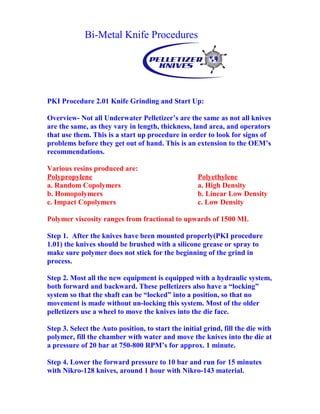Report
Share

Recommended
gypsum powder grinding mill,gypsum grinding mill,gypsum grinderHigh quality gypsum powder grinding mill, stone powder making machine for sale

High quality gypsum powder grinding mill, stone powder making machine for saleShanghai Clirik Mahcinery
Recommended
gypsum powder grinding mill,gypsum grinding mill,gypsum grinderHigh quality gypsum powder grinding mill, stone powder making machine for sale

High quality gypsum powder grinding mill, stone powder making machine for saleShanghai Clirik Mahcinery
More Related Content
What's hot
What's hot (13)
China supplier limestone raymond mill with ce approved

China supplier limestone raymond mill with ce approved
Complete grinding equipment quartz powder grinding machine

Complete grinding equipment quartz powder grinding machine
China bentonite grinding machine with large capacity

China bentonite grinding machine with large capacity
Maintenance of High Volume Dust Repairable Sampler

Maintenance of High Volume Dust Repairable Sampler
Idea of the Year Competition 2012 - Health & Safety Category Winner - Dubal

Idea of the Year Competition 2012 - Health & Safety Category Winner - Dubal
Mineral stone grinding machine by audited supplier

Mineral stone grinding machine by audited supplier
Similar to Start up procedure 2.01
Similar to Start up procedure 2.01 (20)
Rheology model 900 viscometer Mud Engineering Exp.

Rheology model 900 viscometer Mud Engineering Exp.
Reservoir Rock Properties Laboratory Manual Exp (#1)

Reservoir Rock Properties Laboratory Manual Exp (#1)
Drilling Fluid Engineering-Rheological Proporties-M900.pdf

Drilling Fluid Engineering-Rheological Proporties-M900.pdf
Presentation on process control study in spinning dpt.

Presentation on process control study in spinning dpt.
Reservoir Rock Properties Laboratory Manual Exp (#2)

Reservoir Rock Properties Laboratory Manual Exp (#2)
Start up procedure 2.01
- 1. Bi-Metal Knife Procedures PKI Procedure 2.01 Knife Grinding and Start Up: Overview- Not all Underwater Pelletizer’s are the same as not all knives are the same, as they vary in length, thickness, land area, and operators that use them. This is a start up procedure in order to look for signs of problems before they get out of hand. This is an extension to the OEM’s recommendations. Various resins produced are: Polypropylene Polyethylene a. Random Copolymers a. High Density b. Homopolymers b. Linear Low Density c. Impact Copolymers c. Low Density Polymer viscosity ranges from fractional to upwards of 1500 MI. Step 1. After the knives have been mounted properly(PKI procedure 1.01) the knives should be brushed with a silicone grease or spray to make sure polymer does not stick for the beginning of the grind in process. Step 2. Most all the new equipment is equipped with a hydraulic system, both forward and backward. These pelletizers also have a “locking” system so that the shaft can be “locked” into a position, so that no movement is made without un-locking this system. Most of the older pelletizers use a wheel to move the knives into the die face. Step 3. Select the Auto position, to start the initial grind, fill the die with polymer, fill the chamber with water and move the knives into the die at a pressure of 20 bar at 750-800 RPM’s for approx. 1 minute. Step 4. Lower the forward pressure to 10 bar and run for 15 minutes with Nikro-128 knives, around 1 hour with Nikro-143 material.
- 2. Step 5. Stop and uncouple the Pelletizer and inspect each knife visually for grind marks from the die face. This should be across the entire cutting edge. Below is an example of a poor knife grind. If this happens, restart the Pelletizer and run for another 15 minutes or until all the knives are seated in to the die face. In crease the forward pressure to 25 bar, which may be needed from older dies. Also, PKI can offer knife designs to help with a faster start up if one is needed. Note: 1 bar = 14.5 psi or 0.9 kg/cm2 Step 6. A dial indicator should be mounted on top of the Pelletizer so that a measurement of knife travel can be monitored and noted in a station log book. We suggest a movement to start with of .001” per 24 hours or .01mm. Adjustments can be made to this depending on your circumstances. Step 7. PKI recommends the lower the forward pressure the better. Ideal forward pressure with the Bi-metal Nikro-128 knives should be around 3 bar. This could be affected by any surging and polymer flow. When running at 600 RPM’s versus 900 RPM’s will also affect the knife wear. Step 8. If you encounter tail problems, PKI recommends that you do not increase the forward pressure. First unlock the stop for 5 seconds, to see if this clears the problem. If not, next increase the RPM’s by 30-50 in the unlock position, then lock and see if they are clear. If this becomes a chronic problem the knives may need to be inspected for evaluation. This is just an outline to go by. PKI offers round table discussions to evaluate the problem and offer suggestions to help with designs and procedures. This is not a guarantee to extend knife life as there may be other issues involved causing premature knife life.